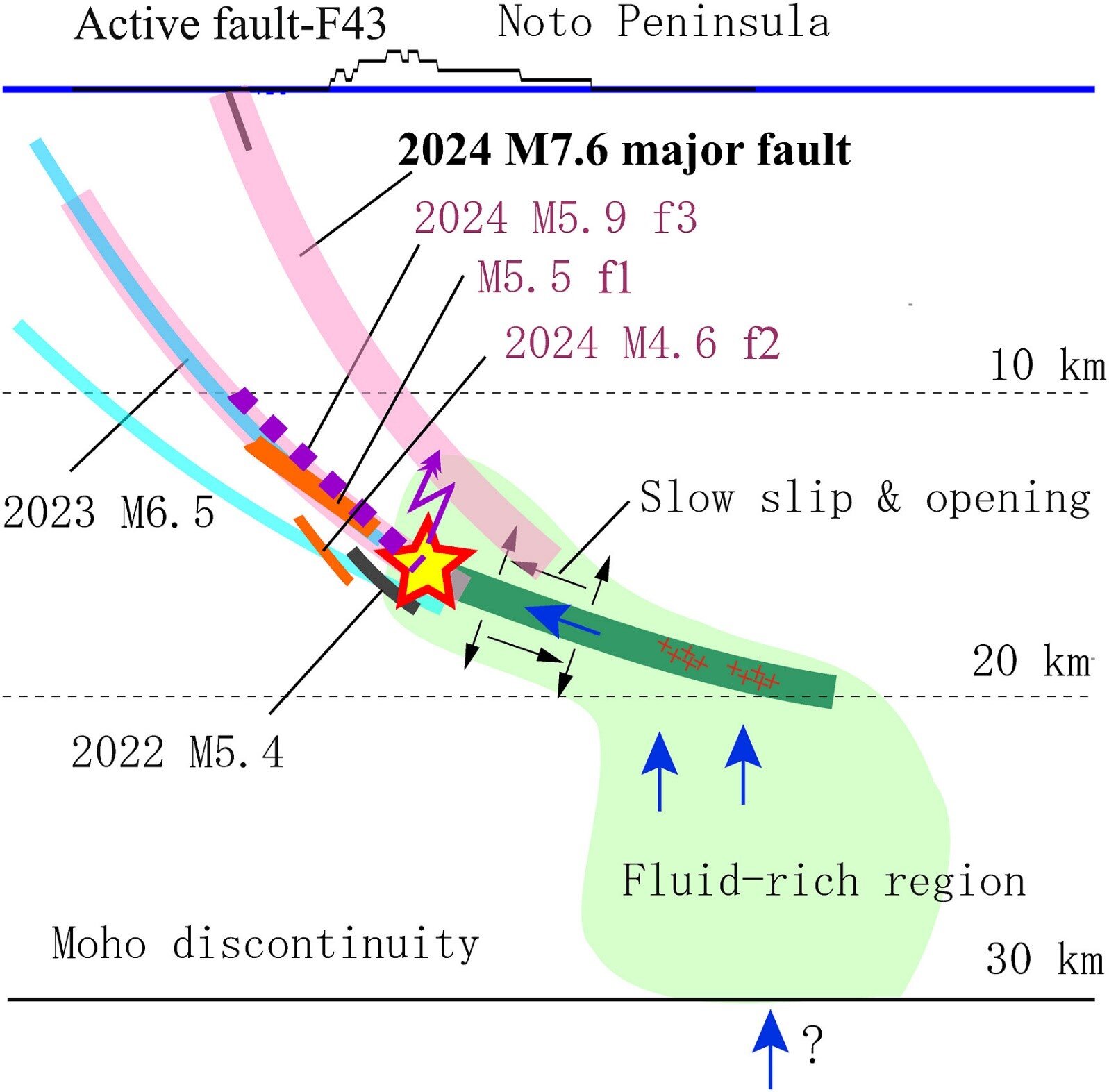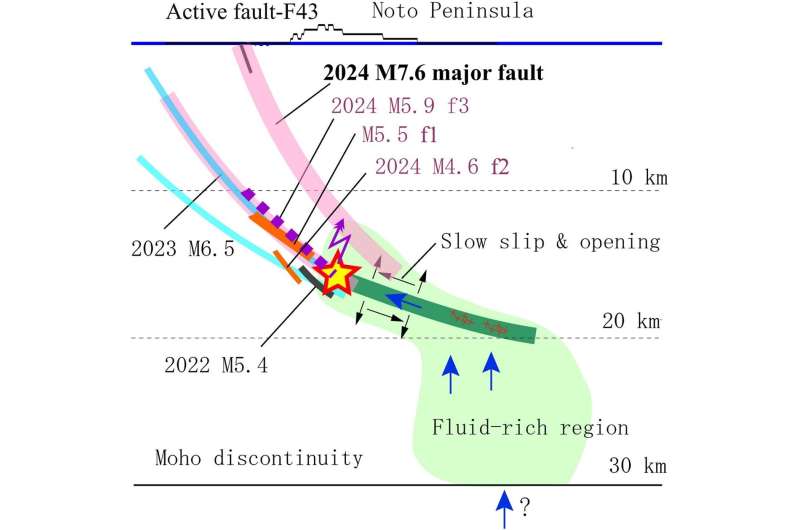
by KeAi Communications Co.

A study published in the journal Earthquake Research Advances sheds light on the relationship between the 2024 magnitude 7.6 Noto Hanto earthquake and a sizable earthquake swarm that began beneath Japan’s Noto Peninsula in November 2020.
The study reveals that the magnitude M 7.6 earthquake, which struck Japan’s Noto Peninsula on January 1st, 2024, was preceded by a series of foreshocks including three significant events (M 5.5, M 4.6, and M 5.9). These foreshocks occurred just seconds to minutes before the main shock.
The last notable foreshock (M 5.9) occurred a mere 14 seconds prior to the mainshock, although other studies considered this foreshock as the beginning rupture of the M 7.6 mainshock. This clustering of foreshocks underscores a complex behavior change from the long-term swarm-like activities to the burst-like foreshock activities right before the mainshock.
High-frequency teleseismic back-projection of P waves from the mainshock, conducted by co-author Dr. Dun Wang at Chinese University of Geosciences in Wuhan, reveals a prolonged initial rupture process lasting approximately 25 seconds before propagating outward bilaterally. This slow initial rupture process, occurring near the preceding swarm region, likely reflects a complicated relationship between dynamic earthquake rupture and fluid flows along multiple sub-parallel faults.
Dr. Xinglin Lei at the National Institute of Advanced Industrial Science and Technology (AIST) in Japan carefully relocated seismic activities since 2018, especially those events with magnitudes larger than 4. The team found that the 2024 M 7.6 mainshock likely ruptured a thrust fault situated above a parallel fault associated with the M 6.5 Suzu earthquake of May 2023 beneath the northeastern Noto Peninsula.
However, those preceding foreshocks, including the initial rupture of the M 7.6 mainshock, all started around the deeper parallel fault. The rupture likely jumped between these sub-parallel faults in the first 25 seconds.
The aftershocks following the 2024 mainshock span a region approximately 160 kilometers long, extending from the northeast to the southwest. The study notes that while aftershocks initially concentrated on the southwestern side of the peninsula, they expanded to both directions following a logarithmic time since the mainshock, likely driven by continuing afterslip triggered by the mainshock rupture.
“While other recently published studies focused on one aspect of the Noto sequence, such as the mainshock rupture or relocation of small earthquakes, this study combines results from many different angles, including relocations of all seismic events since 2018,” says Professor Zhigang Peng from Georgia Institute of Technology. “Hence, it is likely one of the most complete analyses so far for this sequence.”
The findings highlight the importance of monitoring seismic swarms with seismic and geodetic instruments and understanding fluid migration patterns, which could enhance predictive models for future seismic events in this and other regions.
More information:
Zhigang Peng et al, The Evolution Process between the Earthquake Swarm Beneath the Noto Peninsula, Central Japan and the 2024 M 7.6 Noto Hanto Earthquake Sequence, Earthquake Research Advances (2024). DOI: 10.1016/j.eqrea.2024.100332
Provided by
KeAi Communications Co.
Citation:
Complex dynamics of 2024 M 7.6 Noto Hanto earthquake in Japan—the long-lasting swarm and its immediate foreshocks (2024, September 16)
retrieved 16 September 2024
from https://phys.org/news/2024-09-complex-dynamics-noto-hanto-earthquake.html
This document is subject to copyright. Apart from any fair dealing for the purpose of private study or research, no
part may be reproduced without the written permission. The content is provided for information purposes only.